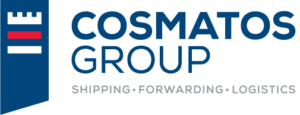The Dynamics and Challenges of the Special Economic Zone at the Port of Alexandroupolis / Development Prospects and Economic Contribution
About The Author
Alexandroupolis is located at a pivotal geostrategic point, at the gateway to the Black Sea and close to the markets of Southeastern Europe. Its port, combined with the prospect of establishing a Special Economic Zone (SEZ), can serve as a lever for growth, not only for Eastern Macedonia and Thrace but also for the Greek economy as a whole.
Former international experience shows that SEZs, when operating with targeted incentives and modern infrastructure, attract high value-added investments, boost exports, and create new jobs. For Alexandroupolis, the combined utilization of the SEZ with multimodal transport (port, railway, road network) could turn it into an international logistics hub, serving the needs of the Western Balkans and Central Europe.
According to research (conducted as part of a postgraduate thesis in logistics on a sample of 110 executives and employees from 12 major Greek Port Authorities, from Port and Customs Authority officials in the region, from the Evros Chamber of Commerce, the Region of Eastern Macedonia–Thrace, trade associations, shipping companies, logistics-transport firms, and related professionals), more than 80% of local stakeholders and entrepreneurs view the creation of an SEZ positively, recognizing that it could act as a catalyst for the regional economy. This positive stance provides a crucial foundation for the project’s success, since social acceptance is decisive.
Legal and Administrative Challenges
The success of the SEZ depends on a clear, transparent, and stable institutional framework. Problems often arise when licensing procedures are time-consuming, regulations are vague, or cooperation between the public and private sector is inadequate. A coherent policy framework is required that ensures:
- Targeted tax and investment incentives.
- Simplified customs procedures.
- Administrative flexibility and effective oversight.
Ongoing consultation with the local community and business stakeholders can prevent friction and strengthen trust.
Infrastructure and Technology: The Key Shortcomings
Despite its potential, the port of Alexandroupolis is assessed by most research participants as “moderate” or “inadequate” in terms of infrastructure. The main shortcomings are identified in:
- Railway connections with the national and European network.
- Storage facilities.
- Modernization of mechanical equipment and cranes.
- Digitization and automation of logistics processes.
International best practices, such as those in the ports of Rotterdam and Trieste, demonstrate that targeted investments in technology and connectivity can dramatically increase efficiency and attract investors.
Local Reactions and Social Dimensions
Although the research records acceptance from the majority of participants, the implementation of the SEZ must take into account potential concerns over environmental impacts, land-use changes, and social transformations. Integrating sustainability (ESG) criteria and ensuring benefits for the local community can reduce resistance and enhance the project’s long-term viability.
Implementation Strategy
The successful development of the SEZ in Alexandroupolis requires a holistic strategy with key pillars:
- Investments in infrastructure – upgrading railway connections, warehouses, and port equipment.
- SEZ regulatory framework – with transparency, incentives, and simplified procedures.
- Digital transformation – development of interoperable logistics platforms, following the model of Rotterdam.
- International partnerships – connection with European networks (TEN-T), leveraging UNCTAD expertise.
- Green transition and branding – promotion as a “Green and Efficient Gateway to Europe.”
The SEZ in Alexandroupolis has the potential to transform the port into an international center of trade and logistics, strengthening both the national economy and regional development. However, its success depends on a combination of strategic investments in infrastructure and technology, a stable and attractive institutional framework, and securing social consensus. With coordinated action and vision, Alexandroupolis can emerge as one of the most competitive transit hubs in Southeastern Europe.

